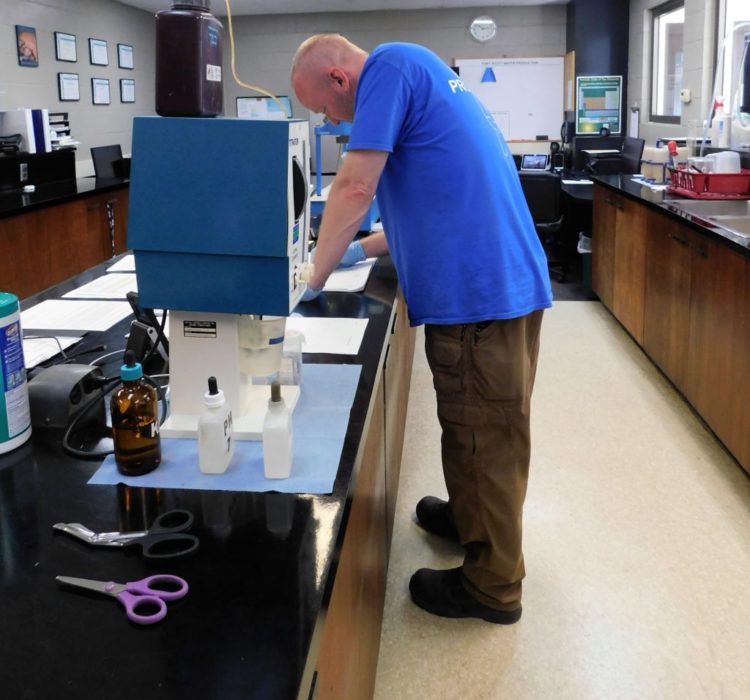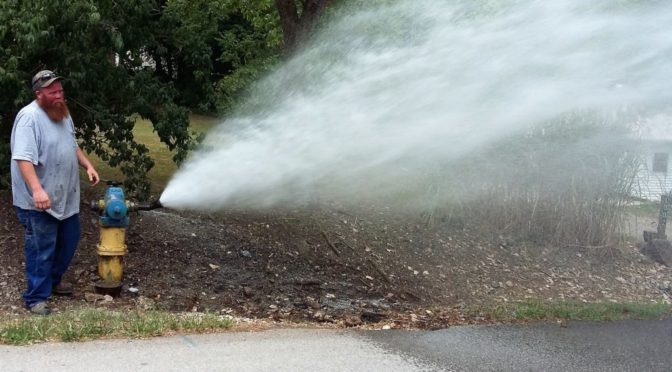
The Marmaton River is the source of drinking water for almost all of Bourbon County, except for the most extreme western portion, which has a private reservoir.
Scott Flater is the superintendent of the City of Fort Scott Water Production Department, who is tasked with providing clean, safe water from the Marmaton River to all of Fort Scott and Consolidated Rural Water District # 2 residents.
“We make water for the city,” Flater said. “But our number one customer is Rural Water #2.”
Over two million gallons of water a day is processed and sent out to the city and the county, he said.
“Everything comes through this building,” Flater said. “We have a river intake on 5th and Short Streets.”
The rural water district then sells and distributes the water from Fort Scott to the small towns in Bourbon County.
The city’s water production employees are in the middle of a cleanout process. It’s called burn out/flushing, and it’s an annual event.
“The water is safe during the rest of the year or during this burnout (cleaning out), it’s safe,” Flater said. “We are sending it out to our family and our community. It’s the highest quality.”
The cleaning out of the system is a maintenance practice for the distribution system, Flater said.
They started July 16, and if all goes as planned the water cleaning process should be completed by the end of next week, Flater said.
“The burnout won’t reach outside of Fort Scott until today (July 20),” Flater said.
Flater commended a small town in Bourbon County for being far-thinking in their water supply.
Flater said Uniontown, in the western part of the county, has been “pro-active to rebuild their water infrastructure” in the last few years. “They’ve done a great job.”




